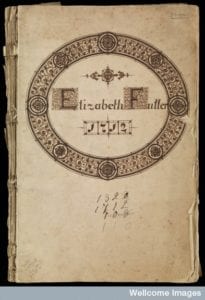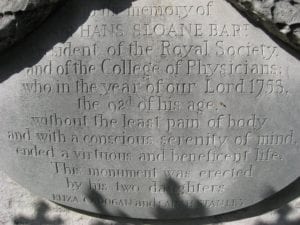By Matthew De Cloedt
Hans Sloane received many gifts from myriad places and numerous people. The two books that Edmund Gibson, the Bishop of Lincoln, sent on 24 July 1722 were different. The titles might not have been noteworthy, or even mentioned in his letter, but the thanks they represented were deeply personal. Edmund’s uncle, Dr Thomas Gibson, had recently passed away and Sloane had been the attending physician during his final days. The care and treatment made an impression on the family and they greatly appreciated his service.
But before Sloane had a chance to read Edmund’s thank you letter, he had three requests for recommendation letters to respond to: all wanting to replace Dr Thomas Gibson who had been the physician to William Cadogan, 1st Earl Cadogan.
As both a court physician and the President of the Royal College of Physicians, Sloane ordinarily attracted a great number of such recommendation requests. In this case, however, Sloane was an even better connection than unusual; his daughter Elizabeth had married the Earl’s younger brother Charles in 1717. The post was prestigious, for Earl Cadogan had served with distinction during the War of the Spanish Succession under John Churchill, 1st Duke of Marlborough. This was the opportunity of a lifetime and the competitors wasted no time in petitioning Sloane for support.
The applicants for the position were strong and each was aware of the need to secure Sloane’s assistance first. Philip Rose urgently wrote: “Dr Gibson being dead… I thought it improper to loose time”. Frank and to the point, Rose assured Sloane that he was worthy of the post and would forever remember whose patronage secured the job for him. Unfortunately, he had a black mark on his record–an outstanding debt with the Royal College of Physicians. It was not until 1728 that the debt was settled and this no doubt hindered his chances of preferment.
John Woodward was a noted physician, natural historian, antiquary, and active member of the Royal Society and Royal College of Physicians. He hoped to see Sloane at a dinner in Greenwich with apothecaries, where they might discuss the job, among other things. Woodward’s chances might have been hampered by the fact that he and Sloane had a spat over a decade before. During an argument over the nature of plant physiology and respiration Woodward insulted Sloane, refused to apologize, and then attempted to remove Sloane from his post at the Royal Society. This bad blood between the two led to Woodward’s absence from actively engaging in the Royal Society business. It, perhaps, would have taken a considerable amount of charm and interesting table talk to overshadow their previous conflict. (That said, Woodward–himself a collector–did write Sloane several other letters about their mutual interests after the dispute of 1710!)
Sir Richard Manningham, the celebrated man mid-wife, claimed to be embarrassed to ask Sloane for his support because of the “Considerable salary” attached to the post. He asked Sloane to “forgive this rash weakness and folly” on his part. Manningham was well qualified. He was elected a Fellow of the Royal Society and licentiate of the Royal College of Physicians in 1719, then was knighted in February 1722. There were no significant blemishes on his record to this point in his career, save his self-confessed boldness in contacting Sloane in the hopes of his support.
Each of the hopefuls vying to replace the late Dr Thomas Gibson recognized the importance of reaching Sloane first. The competitiveness of the medical profession required well-connected contacts like Sloane to gain the positions with the most prestige and largest remuneration. It is not clear whether or not any one of them got the job, but a cursory vetting of the candidates nearly three hundred years later suggests some had more faults than others. As Sloane was the late Dr Gibson’s physician, it might have helped their chances to lament the fact he had passed away instead of immediately requesting Sloane’s backing.




![We can see here that Lister's daughters Susanna and Anna were credited with doing the illustrations: "Susanna et Anna Lister pinx[erunt]".](http://sloaneletters.com/wp-content/uploads/2013/08/1868191187a0f457ea93d0e0ba5a.jpg)




